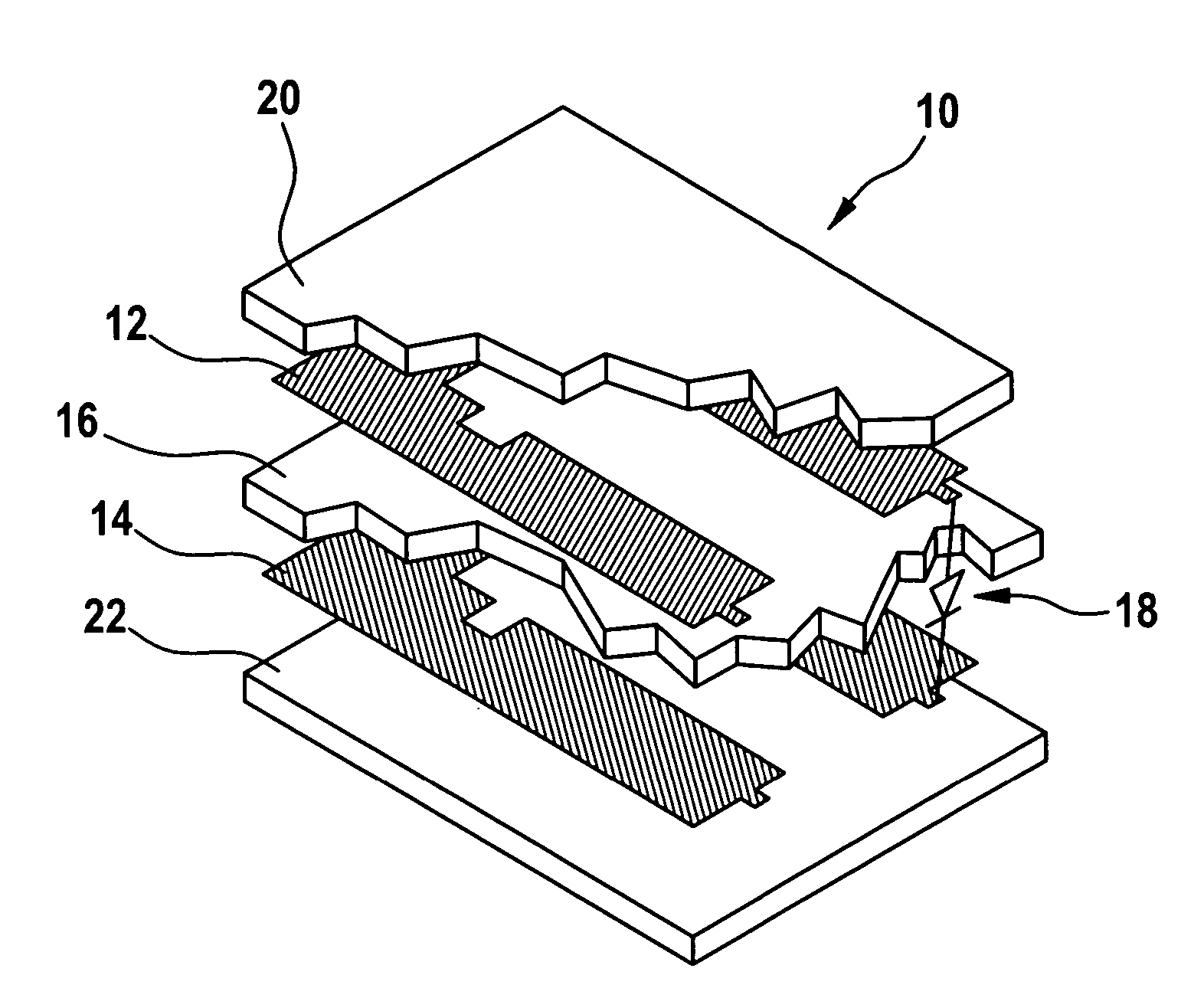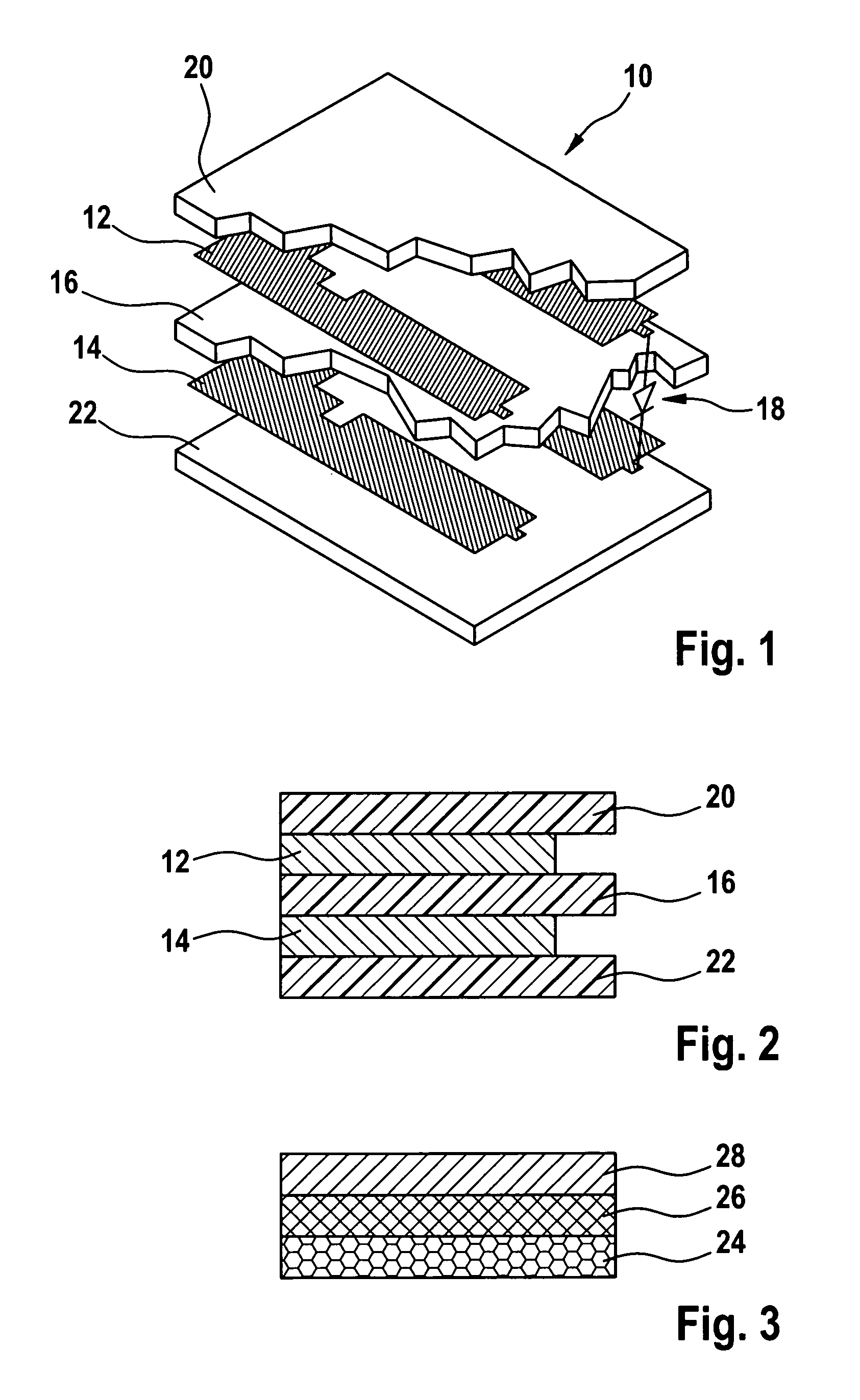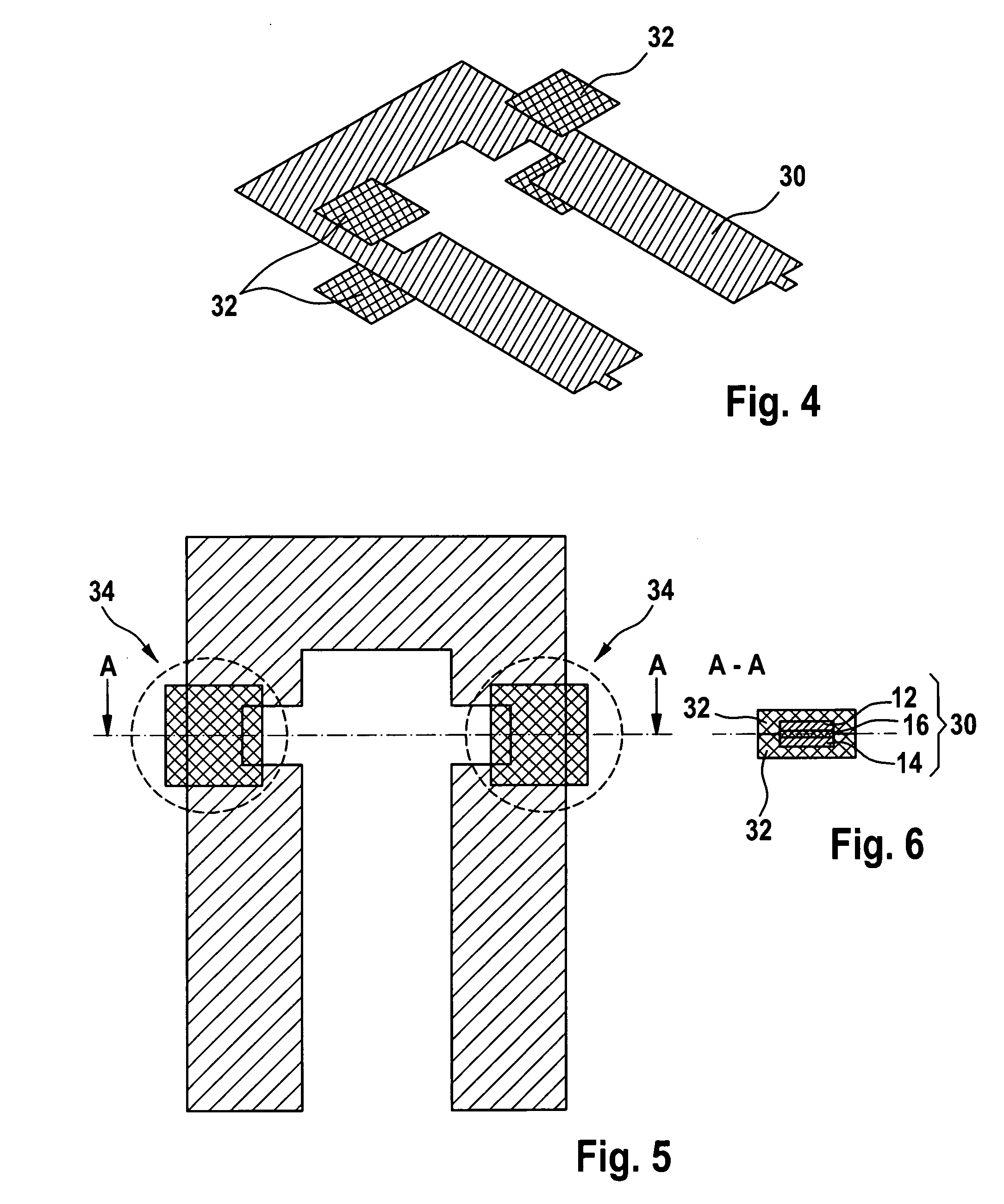System for capacitive detection of a seat occupancy
a capacitive detection and seat technology, applied in the direction of chairs, pedestrian/occupant safety arrangements, instruments, etc., to achieve the effect of reducing the stress on film-based electrodes, preventing corrosion or electrolysis, and greatly enhancing the haptic properties of the capacitive detection system according to the present invention
- Summary
- Abstract
- Description
- Claims
- Application Information
AI Technical Summary
Benefits of technology
Problems solved by technology
Method used
Image
Examples
Embodiment Construction
[0022]FIG. 1 schematically represents an embodiment of a system for detecting seat occupancy 10. The system 10 comprises a film-based sensing electrode 12 and a film-based shielding electrode 14, which are arranged in two substantially parallel layers. For operation, the system is integrated into the compartment of a vehicle, e.g. in the seating or the backrest of a vehicle seat, so that the shielding electrode 14 is directed towards the seat frame and the sensing electrode 12 is directed towards an occupant of the seat. A textile spacer layer 16 is arranged between the two electrodes 12, 14, which electrically insulates the electrodes 12, 14 from each other. The textile spacer layer 16 may be a sheet of felt, a woven or knitted fabric, a warp-knitted spacer fabric, or any combination thereof. The combination of textile spacer 16 and film-based electrodes 12, 14 renders the sandwiched structure less stiff than an all-film-based configuration. As the system 10 is less noticeable by t...
PUM
 Login to View More
Login to View More Abstract
Description
Claims
Application Information
 Login to View More
Login to View More - R&D
- Intellectual Property
- Life Sciences
- Materials
- Tech Scout
- Unparalleled Data Quality
- Higher Quality Content
- 60% Fewer Hallucinations
Browse by: Latest US Patents, China's latest patents, Technical Efficacy Thesaurus, Application Domain, Technology Topic, Popular Technical Reports.
© 2025 PatSnap. All rights reserved.Legal|Privacy policy|Modern Slavery Act Transparency Statement|Sitemap|About US| Contact US: help@patsnap.com



